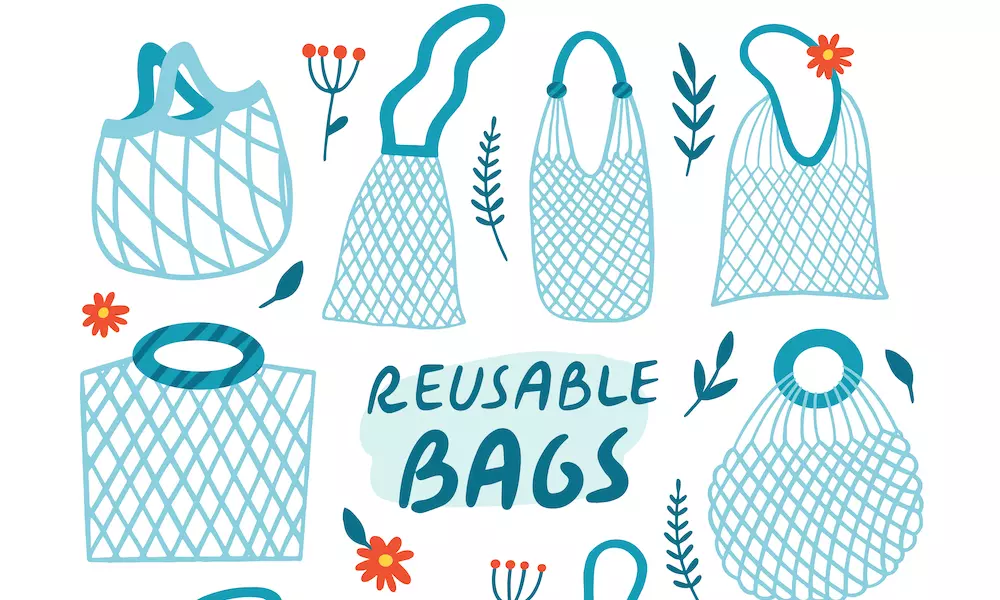Innovation
Five Common Materials Used In Manufacture Reusable Grocery Bags

What materials are used in reusable and recyclable shopping bags? There are a variety of materials that can be used to make reusable grocery bags also recyclable. The steady drive for various fabrics and materials will continue in 2023, with each material having strengths and drawbacks.
Consumer choice of material often comes down to the business’s unique requirements. For example, if the business sells clothes, they can use canvas or cotton bags. If your business is a startup and needs to determine which material it can use for consumer products, this business blog article is for you.
Determining which material to use in your shopping or grocery bags won’t just come down to which works best, i.e., the difference between polypropylene, nylon, and reusable polyester bags. Ultimately it will also depend on which one will work for your business brand and your overall business message.
Being environmentally friendly attracts discerning customers, so carrying the message to the bag you use for promotion makes sense.
The following information looks at the more popular materials used for reusable grocery bags, including:
- Cotton
- Canvas
- Jute or Hemp
- Polypropylene
- Recycled PET (polyethylene terephthalate)
1. Cotton
Cotton bags can be made from organic cotton (grown without pesticides), recycled cotton (reclaimed cotton scrap), or traditional cotton (chemically treated, raw, and natural). Cotton comes in different densities, with denser varieties being heavier. Conventional cotton canvas bags are thicker and costlier than lighter cotton bags.
The advantages of reusable cotton bags include the soft, smooth texture, strength, durability, biodegradability, wide availability, and ease of washing. Its drawbacks are susceptibility to moisture damage, high production and shipping costs, and shrinking from machine washing.
In 2023, customers are using their cotton grocery bags in interesting ways, including:
- Containers for planting tomatoes
- Picnic hampers
- Workout bags
- Knitting or sewing bags
- Laundry bags
2. Polypropylene
Polypropylene is a versatile resin polymer. Its low production cost and relative durability have seen nonwoven polypropylene as one of the best materials for reusable bags. Plus, polypropylene is measured in grams per square meter (GSM), a gauge of the density and weight of the material. Bags with higher GSM are more substantial and more expensive.
People who prefer woven polypropylene grocery bags cite their strength, resistance to chemical corrosion, ease of wiping clean, low porosity, diversity of color options, and flexibility in brand printing. However, its major disadvantages are that it’s non-biodegradable, made from petrochemicals, isn’t soft to the touch, and is unsuitable for machine washing.
3. Nylon
Nylon is a synthetic polymer initially produced as a substitute for silk in fabrics.
Nylon fabric is typically found in track pants, tights, lightweight jackets, pantyhose, swimwear, umbrellas, etc. More recently, it has found application in reusable bags thanks to its ease of maintenance.
Nylon reusable bags are durable, strong, lightweight, readily foldable, easily dyed, and water-resistant. However, they are non-biodegradable and petroleum-based, acquiring a crumpled, unpleasant appearance under heavy use.
4. Polyester
If you examine the labels on your clothes, one type of fabric is likely to come up more than most: polyester. Polyester is a polyethylene terephthalate (PET) polymer, the same material used to make drink bottles. It was invented in 1941 but gained traction in the 1970s when disco wear was taken by storm. Polyester would, after that, be disparaged as the fabric for cheap suits, but its reputation has steadily improved as quality and application increased.
Polyester reusable bags are versatile, water-resistant, do not crinkle easily, and foldable. On the flip side, the bags are made from plastic, the material doesn’t break down easily upon disposal, and heavy use leads to wearing off any branding ink on its surface.
5. Jute or Hemp
Jute and Hemp are very similar as they are from plants. Jute is not as strong as hemp, but it’s used for bags and clothing in much the same way as hemp.
Hemp is drought-tolerant and thrives without the need for fertilizers or pesticides. An acre of hemp yields 3 to 6 tons of fiber while needing little water. Hemp fiber is long, strong, and durable. It’s excellent for making reusable organic bags.
Hemp reusable bags are robust (multiple times stronger than cotton), durable, rot-resistant, soft, and smooth to the touch. They can be machine washed, ‘break in’ with repeated use (similar to leather), and combined with other materials such as recycled PET or cotton. On the downside, hemp usually has to be imported in much of the Western world, which adds to the overall cost of the bags.
Summing Up
No matter what type of reusable bag you choose for customers, it’s always better for the planet than the alternative, i.,e. single-use plastic or paper bags.
Initially, reusable bags were drab and boring and, as such, not popular. However, in 2023, reusable grocery bags have become sophisticated and fashionable, so more customers are willing to be seen with them.
When buying a reusable bag, pay attention to the denier number. It’s a measure of the strength of a material. The higher the denier number, the stronger the fabric. In this business blog, we’ve presented various types of reusable grocery balls and realize all businesses can gain valuable brand reputation through using them too in their packaging where viable.






